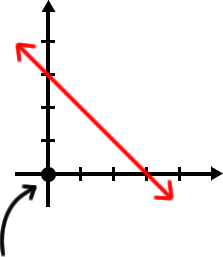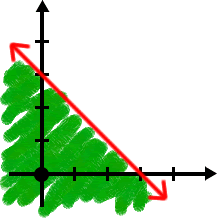Let's graph
![]()
Graphing the line, itself, should be a no-brainer for you... But, figuring out which side should be shaded is often the snag.
Here's the line:
 |
The line is solid because of the
" =
" in the
So... what side gets shaded? To figure this out, we just pick a point that is NOT on the line and see if it works in
|
Let's try (0, 0) since it's so easy to work with:
 |
If
(0,
0) works, then
everything on his side of the line will work -- |
YOUR TURN:
| Graph |
|